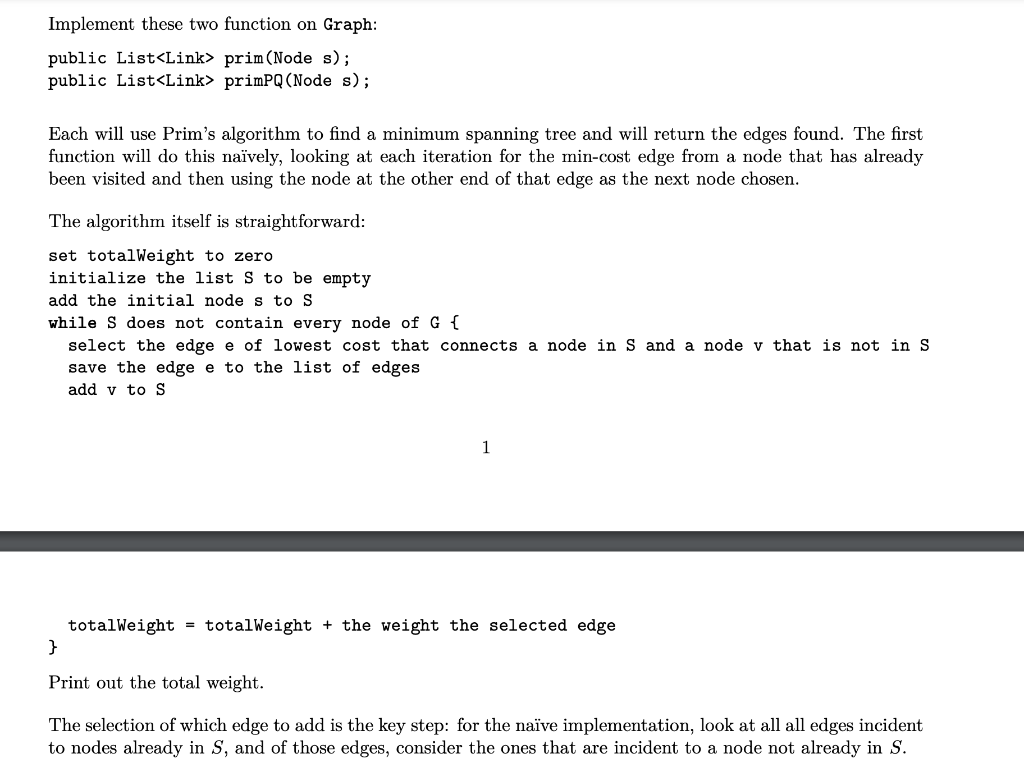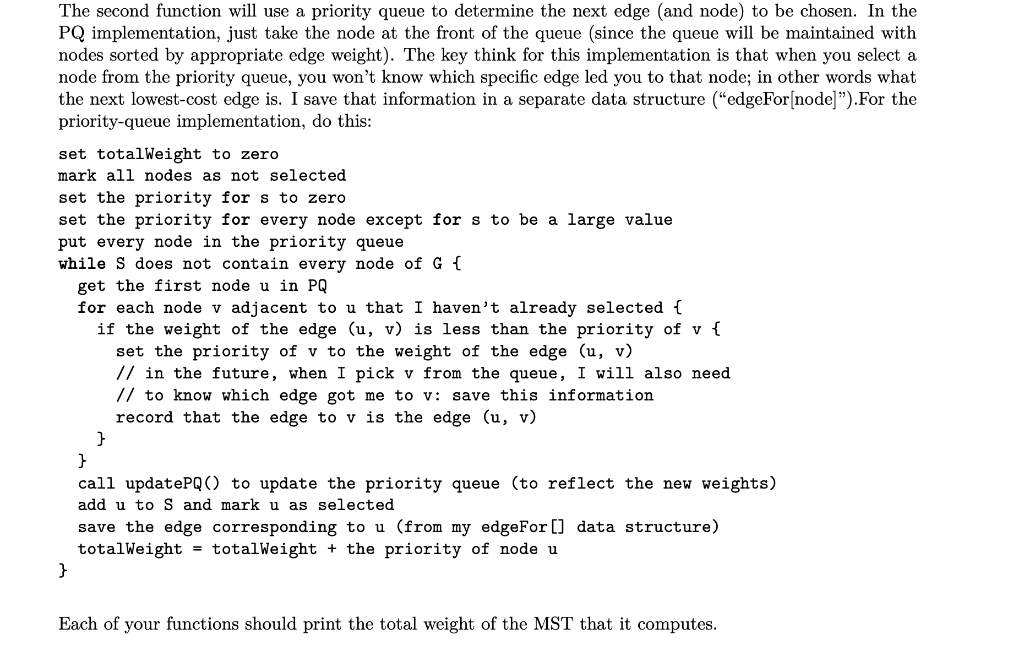Please DO NOT copy and paste from other questions. Write java code that implements: public List prim(Node s);, and public List primPQ(Node s);
This is the algorithm for public List prim(Node s);
 This is the algorithm for public List primPQ(Node s);
This is the algorithm for public List primPQ(Node s);

Implement these two function on Graph: public List> prim(Node s) public List primPQ(Node s ) Each will use Prim's algorithm to find a minimum spanning tree and will return the edges found. The first function will do this navely, looking at each iteration for the min-cost edge from a node that has already been visited and then using the node at the other end of that edge as the next node chosen. The algorithm itself is straightforward: set totalWeight to zero initialize the list S to be empty add the initial node s to S while S does not contain every node of G{ select the edge e of lowest cost that connects a node in S and a node v that is not in S save the edge e to the list of edges add v to S 1 totalWeight = totalWeight + the weight the selected edge \} Print out the total weight. The selection of which edge to add is the key step: for the nave implementation, look at all all edges incident to nodes already in S, and of those edges, consider the ones that are incident to a node not already in S. The second function will use a priority queue to determine the next edge (and node) to be chosen. In the PQ implementation, just take the node at the front of the queue (since the queue will be maintained with nodes sorted by appropriate edge weight). The key think for this implementation is that when you select a node from the priority queue, you won't know which specific edge led you to that node; in other words what the next lowest-cost edge is. I save that information in a separate data structure ("edgeFor[node]").For the priority-queue implementation, do this: set totalWeight to zero mark all nodes as not selected set the priority for s to zero set the priority for every node except for s to be a large value put every node in the priority queue while S does not contain every node of G{ get the first node u in PQ for each node v adjacent to u that I haven't already selected \{ if the weight of the edge (u, v) is less than the priority of v \{ set the priority of v to the weight of the edge (u, v) / in the future, when I pick v from the queue, I will also need // to know which edge got me to v: save this information record that the edge to v is the edge (u, v) \} call updatePQ() to update the priority queue (to reflect the new weights) add u to S and mark u as selected save the edge corresponding to u (from my edgeFor [] data structure) totalWeight = totalWeight + the priority of node u Each of your functions should print the total weight of the MST that it computes
 This is the algorithm for public List primPQ(Node s);
This is the algorithm for public List primPQ(Node s);






